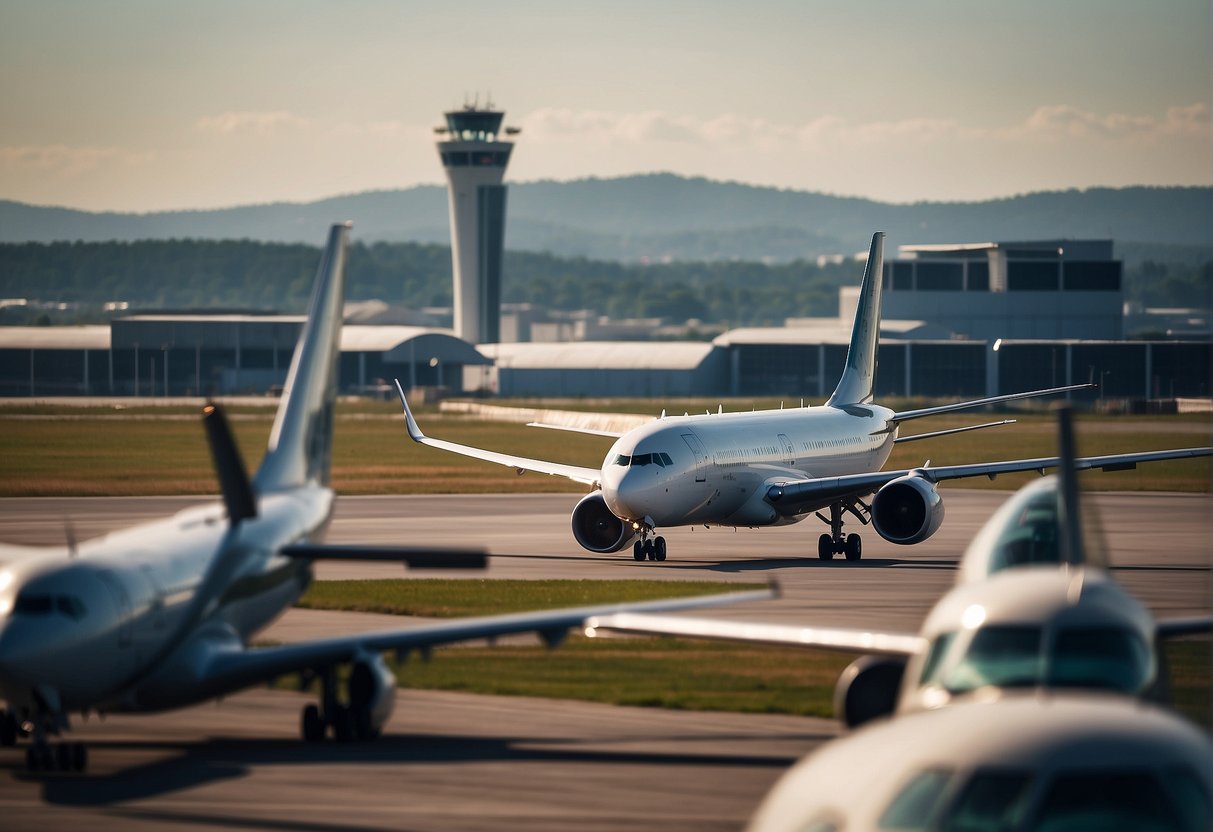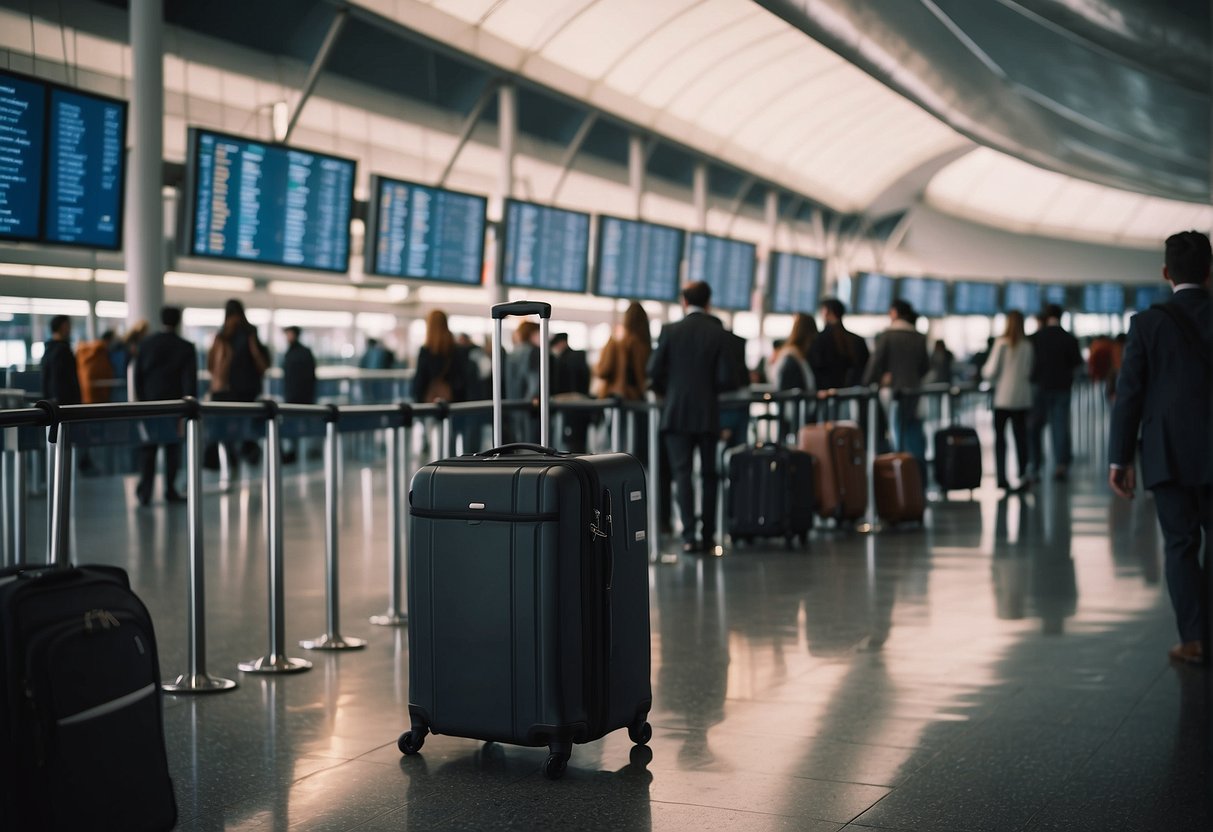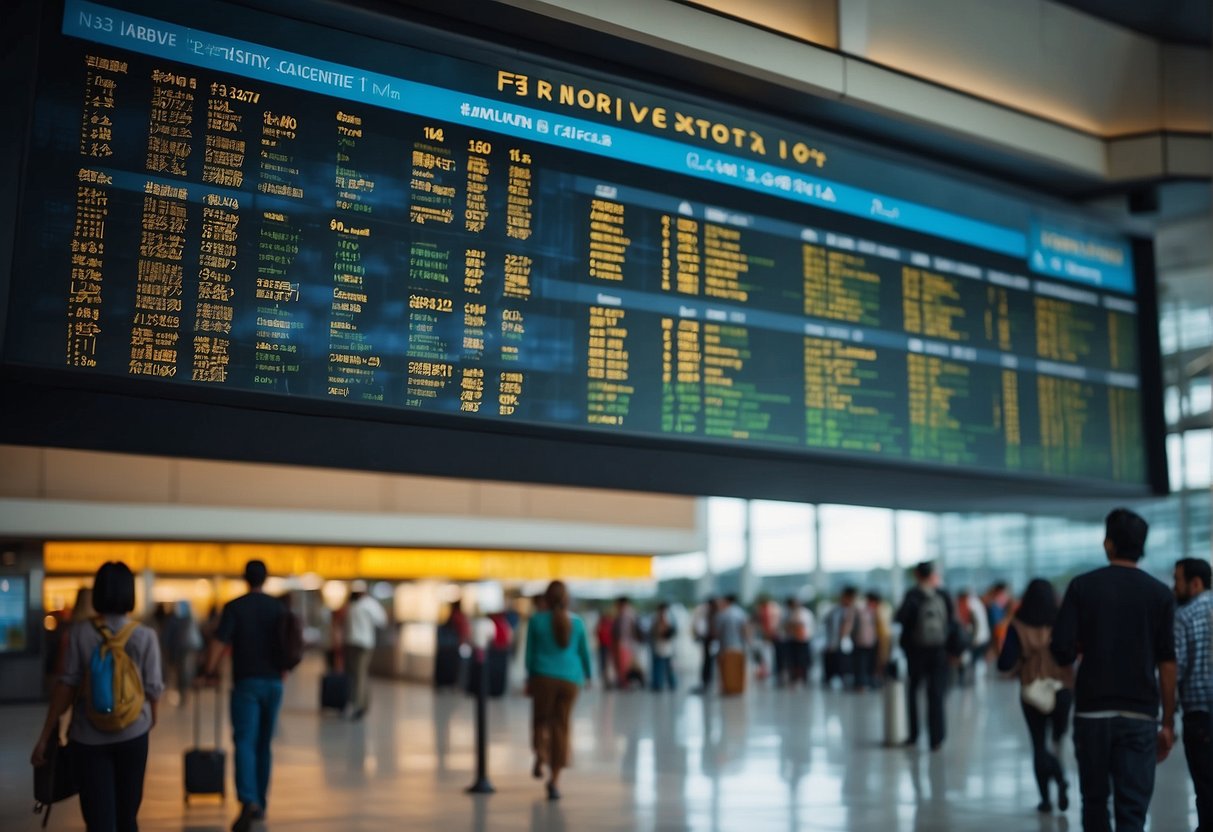Keeping track of international flight status is vital for passengers, airlines, and airports globally. As air travel becomes increasingly interconnected, the importance of real-time flight information grows. Accurate status updates ensure that passengers can plan their arrivals and departures efficiently, airlines can manage their schedules effectively, and airports can coordinate ground operations to minimize disruptions. With the advent of online tools and mobile applications, accessing up-to-date flight information has never been more accessible.

Understanding the nuances behind flight status, such as scheduled, delayed, or canceled flights is crucial for anyone involved in the process of air travel. Various factors, including weather conditions, technical issues, and air traffic control constraints, can affect a flight’s status. It is essential for travelers to be prepared for potential changes and know how to react when disruptions occur. Online platforms and services dedicated to tracking flight status by airline or airport offer essential data to help passengers and professionals make informed decisions.
Key Takeaways
- Real-time flight information facilitates efficient planning for passengers and coordination for airlines and airports.
- Comprehension of flight status terminology and factors affecting it is crucial for managing travel expectations.
- Availability of online tools allows for immediate tracking of flights by airline and airport, assisting in effective travel management.
Understanding Flight Status Terminology

When tracking flights, understanding the specialized terminology used within the aviation industry is crucial. This ensures that one can accurately interpret key information regarding flight status updates.
Flight Terms Explained
FLIFO (Flight Information): This term refers to real-time updates provided during a flight’s operational window. The operational window for flight status can vary, but typically, it’s from 52 hours before the scheduled departure time up to 24 hours after the scheduled arrival time. Flight status data includes information about departures, arrivals, delays, and cancellations.
Departure Time: The local time at the originating airport when a flight is scheduled to leave.
Arrival Time: The local time at the destination airport when the flight is expected to land.
Common Airport Codes
- IATA Codes: Three-letter codes assigned by the International Air Transport Association to airports around the world. For example, John F. Kennedy International Airport in New York is denoted as JFK.
- ICAO Codes: A more detailed four-letter code set by the International Civil Aviation Organization used for more technical purposes like air traffic control. Using the previous example, JFK’s ICAO code is KJFK.
Airline Identifiers
Each airline has a unique two-character or three-digit code used to identify the carrier in various booking and information systems. These airline identifiers serve as a shorthand notation for the full airline name. For example:
- IATA Airline Code: A two-character code; British Airways is represented as ‘BA’.
- ICAO Airline Code: A three-letter code more commonly used in flight operations and air traffic control; British Airways’ ICAO code is ‘BAW’.
Understanding these terms and codes is essential for tracking a flight’s status and managing travel itineraries effectively.
Tracking Flight Status

With advancements in technology, passengers can now easily track the status of international flights in various ways. Real-time updates provide accurate arrival times, departure times, and in-flight progress.
Using Online Flight Trackers
Online flight trackers have revolutionized how individuals monitor flights. Websites like FlightAware offer detailed views of aircraft and airports, enabling users to track flights by flight number, airline, or destination. These trackers often include layers for weather and other considerations affecting flight status. Flightradar24 is celebrated for its extensive coverage and features, making it possible to follow air traffic in real time.
Mobile Apps for Flight Tracking
Many travelers leverage mobile apps to stay informed about their flight status on-the-go. These apps deliver push notifications directly to the user’s device, ensuring they receive immediate updates. The convenience of having flight information accessible through a smartphone makes apps a popular choice.
Flight Information at Airports
Airports provide on-site flight status via various mediums, from departure boards to information desks. For instance, JFK Airport maintains a real-time flight tracker for departures, which can be searched using airline, destination, or flight number, helping passengers and greeters stay informed about flight schedules.
Factors Affecting Flight Status

When planning travel, understanding the variables that can alter a flight’s status is crucial. Numerous factors can lead to changes, including delays and cancellations, which can significantly impact a traveler’s itinerary.
Weather Impacts on Flights
Weather conditions are a primary factor affecting the punctuality and regularity of international flights. Adverse weather, such as storms or heavy fog, can lead to flight delays or, in more severe cases, cancellations. Meteorological challenges not only affect the departure and arrival times but can also cause rerouting and extended flight times. However, forecasting advancements have improved airlines’ ability to anticipate and manage such disruptions.
Technical Issues and Delays
Flight status can also be influenced by technical issues related to aircraft. Regular maintenance and stringent checks are in place to ensure flight safety, but unforeseen technical malfunctions can occur, resulting in delays. Additionally, the aviation system’s complexity means that technical problems with one aircraft can have a knock-on effect, disrupting the schedule of subsequent flights. This interconnectedness underscores the importance of timely communication between airlines and passengers during states of delay.
Flight Status by Airline
Tracking flight status allows passengers to stay informed about the whereabouts and schedules of their flights. Different airlines have their own systems to provide this essential information.
Major Airline Status Systems
Major airlines offer sophisticated flight tracking systems on their websites. These systems enable travelers to monitor their flight’s status in real-time, including departure and arrival times, gate information, and any changes in the flight schedule. For example, with Delta Air Lines, passengers can check the status of their flights online, ensuring they have access to the latest updates directly from the airline. Similarly, entities like American Airlines provide robust platforms for passengers to verify their flight details, from check-in to landing.
Budget Airline Flight Information
Budget airlines might not always offer the same level of detail in their flight tracking systems, but they still ensure that passengers can access critical information. They typically provide basic status updates, such as estimated takeoff and landing times, through their websites or customer service channels. For those traveling with budget airlines, it’s always good practice to visit the airline’s website periodically before the flight to verify any last-minute schedule adjustments or operational alerts.
Flight Status by Airport

When considering flight status information, two distinct categories of airports often come into focus: Hub Airports and Regional Airports. Each category plays a unique role in the global air traffic network and provides specific sets of data on flight status.
Hub Airport Flight Information
Hub airports are central nodes in the aviation network, typically located in significant cities or regions. FlightAware offers real-time updates on flights arriving at and departing from these airports, including any delays and cancellations that can affect travel plans. A hub airport’s status is crucial for passengers connecting to subsequent flights, as a delay in one hub can have a ripple effect, impacting countless journeys.
Passengers can find comprehensive flight status and tracking data for these airports using tools like FlightAware – Flight Tracker, which provides current and historical flight information accessible from any programming language.
Regional Airport Status Updates
On the other hand, regional airports cater to the local areas and typically handle less traffic. The flight status updates at these airports are of great importance to residents and visitors to the area. For some of these airports, FlightStats provides detailed live updates on flight arrivals and departures, which can offer peace of mind to those expecting loved ones or traveling to and from these locations.
However, travelers looking for a deeper understanding of the quality and amenities of leading airports can refer to rankings of the best airport in the world or explore a list of the top ten airports in the world, which assess various aspects, including efficiency, passenger experience, and flight status information services.
Preparing for Departures and Arrivals

Managing departure and arrival times ensures a stress-free international travel experience. It is essential to verify the status of flights prior to leaving for the airport and to know what to expect upon arrival.
Pre-Flight Status Checks
Passengers should check their flight status early and often. Airlines update flight information regularly, which can be critical for catching changes in departure times. Utilizing flight tracking websites like FlightAware or FlightStats can provide real-time updates. It’s advisable to also review the latest guidelines for international travel, as they may affect flight schedules.
- Review airline’s official communication
- Monitor real-time updates on tracking websites
- Keep abreast with the latest international travel guidelines
On the Day of Travel
On travel day, timing is everything. Arriving at the airport well before the scheduled departure time can save travelers from unexpected delays. The Transportation Security Administration (TSA) has guidelines that can affect time spent in security. Travelers should also make use of apps and services offered directly by the airlines and confirmed during pre-flight checks to stay informed of any last-minute changes.
- Depart for the airport with enough buffer time to accommodate security and boarding
- Continuously check flight updates via airline apps and notifications
Whether heading to the airport or waiting for an arrival, staying informed and allowing for ample time are the cornerstones of a smooth journey.
Handling Flight Disruptions

Flight disruptions can create significant inconvenience, but understanding how to manage cancellations and knowing your rights can mitigate the impact on your travel plans.
Dealing with Flight Cancellations
When a flight is cancelled, passengers should first contact their airline for rebooking options. Many airlines will rebook passengers on the next available flight at no additional cost. If an alternative flight does not suit your schedule, some airlines may offer refunds or vouchers. Consider reviewing your travel insurance policy for specific coverage details on flight cancellations, which may provide compensation for meals, accommodation, and transportation expenses incurred due to a cancelled flight.
Understanding Your Rights and Options
Every airline has its passenger rights policy, which outlines what compensation and services you are entitled to in the event of a flight disruption. It’s essential to familiarize yourself with these policies as they may vary by airline and region. In some cases, regulatory bodies enforce compensation standards for passengers affected by delays or cancellations. Additionally, when traveling overseas, ensure you understand the limitations of your health coverage in case of travel-related emergencies.
Frequently Asked Questions

Navigating the complexities of international travel can be simplified by accessing timely information on flight statuses. This section aims to address common queries related to tracking international flights, ensuring passengers are well-informed and prepared for their travels.
What is the process for checking the status of an international flight?
One can check the status of an international flight by visiting the airline’s official website or checking flight status through American Airlines, entering the flight number, and viewing the latest updates regarding departure and arrival times, along with any delays or changes.
Where can I track the live status of international flights?
Live status of international flights can be tracked via several online platforms and apps designed for real-time flight tracking. Airlines’ own websites and applications often provide the most up-to-date flight information for their services.
How can I find the arrival and departure times of international flights?
Arrival and departure times for international flights can be found on airport websites, through airline customer service channels, and via third-party websites that aggregate flight information. Airlines’ official sites are typically the most reliable sources of this data.
Is there a way to get real-time updates on international flight positions?
Real-time updates on international flight positions can be obtained through flight tracking services provided by some airlines and specialized flight-tracking websites. These tools allow viewers to see the geographic position of an aircraft in transit.
What information is required to check the ticket status for an international flight?
To check ticket status for an international flight, the passenger’s last name and booking reference or ticket number are required. This information is used to retrieve the booking details from the airline’s system.
How do I verify whether an international flight has landed?
Verifying if an international flight has landed can be done by checking the relevant airport’s arrivals page or using a flight tracking service. Most airports and airlines offer real-time arrival updates online and through their mobile apps.
Leave a Reply